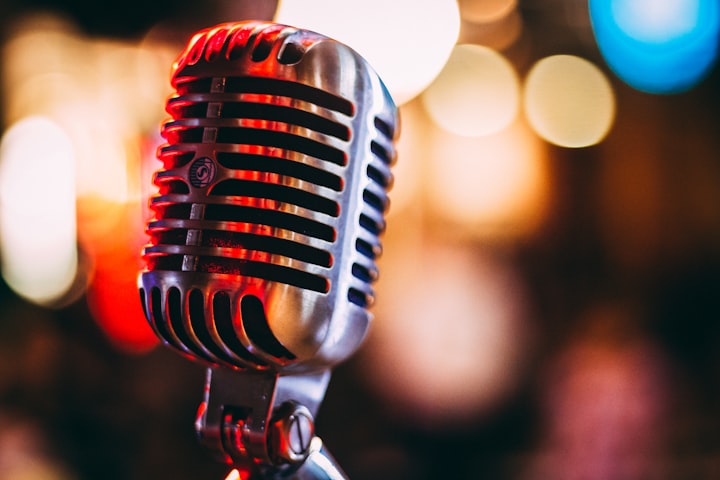Exploring the Power of ASMR
The Science Behind Tingles and Relaxation

ASMR, which stands for Autonomous Sensory Meridian Response, has taken the internet by storm in recent years. Videos featuring soft whispers, gentle tapping, and soothing sounds have gained millions of views and followers, leaving many curious about the phenomenon and its effects on relaxation and well-being. In this article, we will explore the power of ASMR and delve into the science behind the tingles.
ASMR refers to the pleasant, tingling sensation that some individuals experience in response to specific auditory or visual stimuli. Common triggers include whispering, tapping, scratching, page-turning, and even watching someone perform a task with meticulous attention to detail. These triggers are often accompanied by a sense of calmness, relaxation, and even euphoria.
Researchers are still unraveling the mysteries of ASMR, but several theories have emerged to explain its effects. One prevailing theory suggests that ASMR triggers activate the parasympathetic nervous system, promoting a state of deep relaxation and reducing stress and anxiety. This response is thought to be linked to the release of endorphins, neurotransmitters that contribute to feelings of pleasure and well-being.
Another theory proposes that ASMR triggers stimulate the brain's reward system, releasing dopamine, a neurotransmitter associated with pleasure and reward. This may explain why individuals find ASMR videos addictive and seek them out as a form of stress relief or entertainment.
Moreover, studies have shown that ASMR can have physiological benefits. Researchers at the University of Sheffield conducted a study in which they monitored heart rate variability and skin conductance in individuals who experienced ASMR. The results indicated that ASMR triggers led to a decrease in heart rate and an increase in skin conductance, suggesting a heightened state of relaxation and reduced arousal.
While the science behind ASMR is still in its infancy, anecdotal evidence abounds. Many individuals report using ASMR videos as a sleep aid, finding that the gentle sounds and whispers lull them into a deep and restful slumber. Others use ASMR as a tool for stress reduction, finding solace and comfort in the tingles that wash over them during a session.
One aspect of ASMR that sets it apart from other relaxation techniques is its highly personalized nature. Different individuals respond to different triggers, and what may induce relaxation in one person may have no effect on another. This individual variability has led to a vast array of ASMR content, with creators experimenting and catering to various preferences and triggers.
Despite its growing popularity, ASMR still faces some skepticism and misconceptions. Critics argue that the sensations experienced during ASMR are simply a placebo effect or a result of suggestion. However, ongoing research suggests that ASMR triggers can elicit measurable physiological responses, indicating that the phenomenon goes beyond mere suggestion.
As the popularity of ASMR continues to rise, scientists and researchers are exploring its potential applications. Some therapists have started incorporating ASMR techniques into their practice, using gentle sounds and whispered affirmations to help individuals relax and manage stress. Additionally, ASMR is being studied for its potential therapeutic benefits in conditions such as insomnia, anxiety disorders, and chronic pain.
As our understanding of ASMR grows, researchers are delving deeper into the mechanisms behind this phenomenon. Functional magnetic resonance imaging (fMRI) studies have been conducted to observe the brain activity of individuals experiencing ASMR. The findings have shown that certain brain regions associated with reward, emotional processing, and sensory perception are activated during ASMR experiences.
ASMR has become a global phenomenon, with individuals from diverse backgrounds and cultures participating in its creation and consumption. It has created a sense of community and connection, with enthusiasts gathering in online forums and social media groups to share their favorite triggers, discuss their experiences, and even collaborate with ASMR artists.
Moreover, ASMR has extended beyond the realm of online videos. It has made its way into mainstream media, with advertisements incorporating ASMR techniques to evoke positive emotions and create a sense of intimacy with viewers. ASMR-inspired products, such as ASMR-inducing apps, pillows with built-in speakers, and dedicated ASMR microphones, have also entered the market, catering to the demand for more immersive and personalized ASMR experiences.
In conclusion, the power of ASMR lies in its ability to induce relaxation, calmness, and even euphoria through specific auditory and visual triggers. Although the science behind ASMR is still developing, there is growing evidence to support its benefits and effects on well-being. Whether you are a devoted ASMR enthusiast or new to the phenomenon, the exploration of ASMR offers a fascinating glimpse into the potential of sensory experiences to foster relaxation and promote a sense of tranquility in our increasingly busy and hectic lives.
About the Creator
Kenneth Argüello
Welcome to my page! In this space Ill be sharing my passions and curiosities






Comments
There are no comments for this story
Be the first to respond and start the conversation.